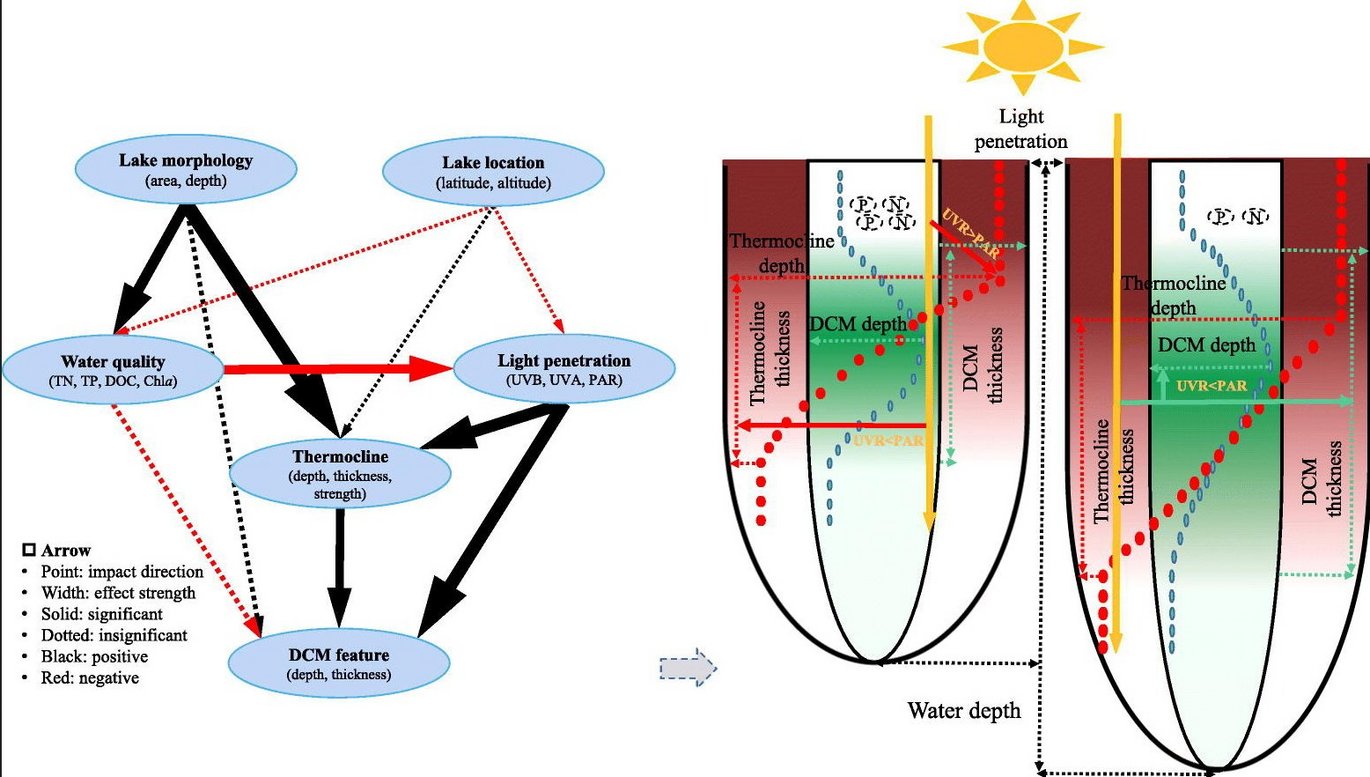Patterns of thermocline structure and the deep chlorophyll maximum feature in multiple stratified lakes related to environmental drivers
New publication by Jingyi Li, Yuanrui Li, Miao Liu et al.

Thermal stratification and the deep chlorophyll maximum (DCM), two commonly related phenomena in stratified lakes, play fundamental roles in eco-environmental processes. However, the progressive linkages among multi-dimensional environmental factors, thermal stratification and DCM were poorly explored, which greatly constrains our understanding of cross-level governance in deep lakes. In this study, the thermocline structure (i.e., thermocline depth, thickness and strength) and DCM feature (depth and thickness) and their driving factors were investigated at regional scale using data from 18 stratified lakes differing in limnological characteristics, Southwest China. Our study showed that (1) DCM occurred close to the thermocline in most lakes (represented by their depth and thickness), (2) the depths of the thermocline and DCM were both shallower than the euphotic depth, and (3) spatial heterogeneity occurred the thermocline structure and the DCM feature, reflecting different environmental factors. Specifically, water depth and light penetration depths were both positively correlated with thermocline depth and thickness and the DCM feature, and ultraviolet radiation (UVR) was more important than photosynthetically active radiation (PAR) for thermocline depth, but PAR was more important for thermocline thickness; moreover, PAR played a more prominent role than UVR for the DCM feature. As there were interactions between some environmental factors, we built a cascading path using a partial least squares path modelling for the DCM feature: lake morphometry directly impacted the thermocline structure and surface water quality; the water quality further affected light penetration depths as well as the thermocline structure; light penetration depth and thermocline structure combined directly determined the DCM feature, where the importance of light was larger. Our findings provide information on the cascading drivers of the thermocline structure and DCM feature in deep lakes and also constitute a valuable reference for deep lake management under the dual pressure of climate change and eutrophication.
